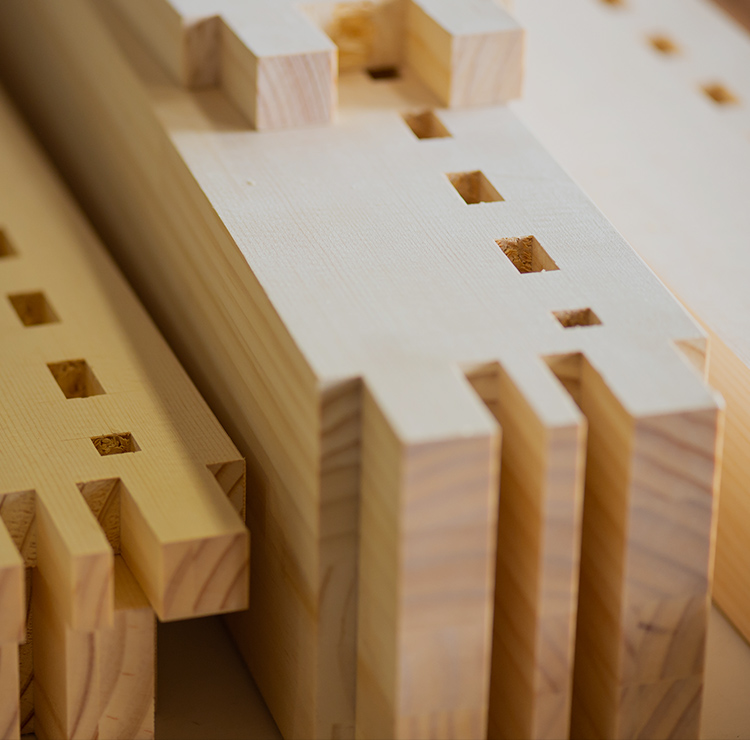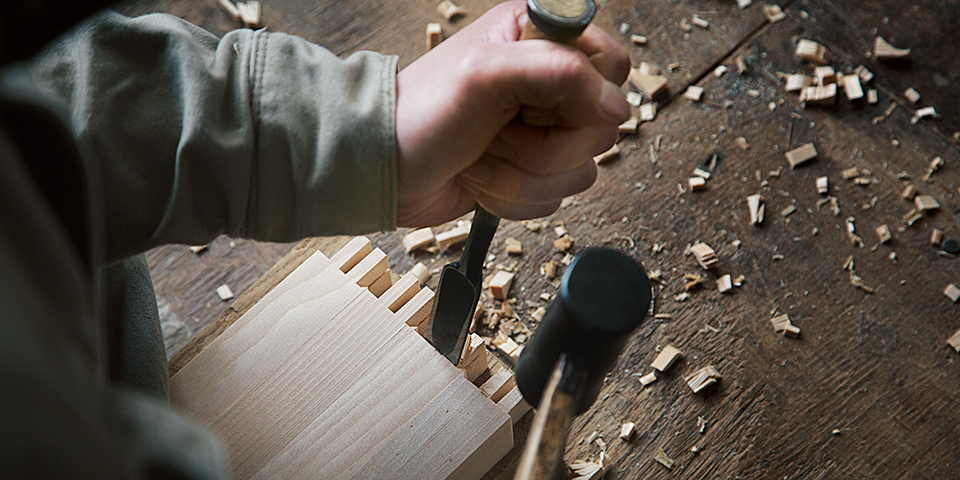 Overview of producing areas
Fittings
Overview of producing areas
Fittings




History
Famed from long ago known as the Kishu “Land of Trees,” Wakayama was a land hosting an active forest industry blessed with abundant Japanese cedar, Japanese cypress, and other trees. Until the development of modern transportation networks, heavy timber was loaded onto boats and transported on the Kino-kawa River that runs through the prefecture. High-quality lumber collected in the area was easily sent from the Wakayama coast to the two major commercial areas of Osaka and Edo (Tokyo). Because of this, the lumber industry and fittings industry developed along the banks of the Kino-kawa River. It is said that there were about five fittings businesses that served as carpentry subcontractors at Wakayama Castle around 1860. They made fittings from the scrap wood of the Yoshino cedar that was transported on the Kino-kawa River and began transporting the fittings to Osaka around 1870, becoming an independent industry.






Sites of craftsmanship
Wakayama is a production area for Japanese and Western fittings. In addition to traditional products, the area manufactures products matched to contemporary lifestyles and architectural styles. To make use of local timber and create differentiation from other production areas, the area creates people-friendly products that do not release harmful substances and is undertaking development of environmentally thoughtful products that make effective use of thinned wood. Over the years, while the area’s companies have taken on the creation of products in response to orders from major housing manufacturers, they have created original brand products. In recent years, the artwork-like value of these as interior items has attracted attention from outside the industries of home sales and construction.


The appeal of manufacturing in Wakayama, in 90 seconds


Innovation
Wakayama’s fittings industry is now at a turning point because of changes in consumer needs due to the Westernization of lifestyles, the development of materials, and the emergence of overseas products. Companies in the industry are making use of their high level of technology to create products that will fit people’s lives from here on out. Outsourcing design strengthens the brand power. This is expected to go beyond home use and contribute to the creation of commercial facilities, hotels, inns, traditional restaurants, and other spaces related to the Japanese tourism industry. At overseas exhibitions, the products are valued for their functionality as fittings, as well as for their artistic quality. The industry has set its sights on adding new value to tradition and on expanding its sales channels overseas.








